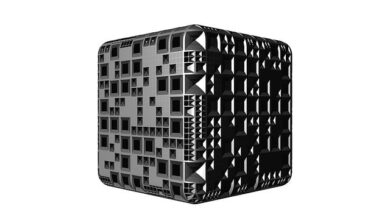Sustainability Technologies and Green Energy Solutions

Introduction:
In today’s world, the pressing need for sustainable practices and green energy solutions has become more apparent than ever before. As we face the challenges of climate change, it is essential to adopt innovative technologies that promote sustainability while reducing our carbon footprint. In this article, we will explore the transformative power of sustainability technologies and showcase how they contribute to a greener future.
Harnessing Renewable Energy:
One of the most impactful ways to achieve sustainability is through the harnessing of renewable energy sources. Renewable energy technologies such as solar power, wind turbines, and hydroelectricity offer clean and inexhaustible alternatives to fossil fuels. By embracing these technologies, we can reduce greenhouse gas emissions and mitigate the negative effects of climate change. Moreover, renewable energy solutions pave the way for energy independence, creating a more resilient and decentralized energy system.
Energy-Efficient Buildings:
Another area where sustainability technologies play a crucial role is in constructing energy-efficient buildings. These structures are designed to minimize energy consumption while maximizing comfort and functionality. Integrating smart systems, insulation materials, and efficient lighting reduces energy wastage and lowers operational costs. Additionally, sustainable construction practices prioritize the use of eco-friendly materials, ensuring minimal environmental impact throughout the building’s life cycle.
Electric Mobility Revolution:
The transportation sector is a significant contributor to carbon emissions worldwide. To combat this, sustainability technologies have given rise to an electric mobility revolution. Electric vehicles (EVs) are rapidly gaining popularity due to their zero-emission nature. By transitioning to EVs and developing robust charging infrastructure, we can reduce air pollution, dependence on fossil fuels, and noise pollution. The advancements in battery technology have also improved the range and performance of EVs, making them a viable alternative for everyday commuting.
Circular Economy and Waste Management:
Achieving sustainability goes beyond energy solutions; it encompasses the entire lifecycle of products. The concept of a circular economy aims to minimize waste generation and maximize resource efficiency. Sustainability technologies facilitate recycling, repurposing, and upcycling of materials, reducing the need for extraction and minimizing environmental degradation. Innovative waste management systems, such as composting and anaerobic digestion, transform organic waste into valuable resources, further promoting a sustainable and circular approach.
Conclusion:
Innovative Solar-Powered Breakthrough: New Technology Boosts Energy Efficiency by 30%

Introduction:
Are you tired of high energy bills and the impact on the environment? Well, get ready to be amazed by a groundbreaking solar-powered technology that is set to revolutionize the way we harness energy. This innovative breakthrough promises a remarkable 30% increase in energy efficiency, ushering in a new era of sustainable power generation. Say goodbye to traditional energy sources and embrace the future with this game-changing solution.
Captivating Paragraph:
Imagine a world where every ray of sunlight can be converted into clean, renewable energy. With the latest advancements in solar technology, this dream is becoming a reality. The new solar-powered breakthrough is like discovering a hidden treasure, unraveling the true potential of the sun’s abundant energy. This cutting-edge solution not only addresses the pressing need for sustainable power but also offers a significant boost in energy efficiency. It’s time to unlock the full potential of solar energy and make a lasting impact on our planet.

Engaging Paragraph:
The secret behind this revolutionary technology lies in its advanced photovoltaic cells, which have been meticulously designed to capture and convert sunlight into electricity more efficiently than ever before. These state-of-the-art cells utilize cutting-edge materials and engineering techniques, maximizing the conversion rate and minimizing energy losses. By optimizing every drop of sunlight, this breakthrough enables a staggering 30% increase in energy efficiency compared to conventional solar systems. Just imagine the possibilities of generating more power from the same amount of sunlight!
Informative Paragraph:
This groundbreaking technology doesn’t stop at enhancing energy efficiency; it also boasts several other compelling features. For instance, its modular design allows for easy scalability, making it suitable for both residential and commercial applications. Whether you want to power your home or contribute energy back to the grid, this solar-powered breakthrough can seamlessly adapt to your needs. Moreover, its sleek and unobtrusive appearance ensures a visually appealing integration with any architecture, making it an attractive choice for eco-friendly enthusiasts and forward-thinking businesses.
The Future is Bright:
Revolutionizing Transportation: Electric Vehicles Lead the Charge Towards a Greener Future
Have you ever imagined a world where transportation is not only efficient but also environmentally friendly? Well, the future is here, and it’s being revolutionized by electric vehicles (EVs). These remarkable machines are leading the charge towards a greener future, transforming the way we travel and reducing our carbon footprint along the way. In this article, we’ll delve into the details of this exciting phenomenon and explore why EVs are taking center stage in the transportation industry.
One of the key advantages of electric vehicles is their eco-friendliness. Unlike conventional gasoline-powered cars, EVs run on electricity, which means they produce zero emissions while on the road. This makes them a game-changer in the fight against climate change and air pollution. By embracing electric vehicles, we can significantly reduce greenhouse gas emissions and improve the overall air quality in our cities.

Not only are EVs better for the environment, but they also offer numerous benefits to their owners. For starters, electric vehicles are incredibly energy-efficient. They convert a higher percentage of the energy stored in their batteries into propulsion, resulting in fewer energy losses compared to internal combustion engines. This translates to lower fuel costs and long-term savings for consumers. Moreover, EVs have fewer moving parts, which leads to reduced maintenance needs and lower repair costs.
Furthermore, the advancement of technology has brought about significant improvements in battery performance, addressing one of the major concerns surrounding electric vehicles – range anxiety. Modern EVs can travel longer distances on a single charge, with some models surpassing 300 miles. Additionally, charging infrastructure is expanding rapidly, making it easier than ever to find charging stations and recharge your vehicle on the go.
Another fascinating aspect of electric vehicles is their potential to become an integral part of a smarter and more sustainable energy system. Through vehicle-to-grid (V2G) technology, EVs can feed excess energy back into the grid during peak demand periods or use their battery storage capacity to power homes and buildings during blackouts. This two-way energy flow not only enhances the stability of the grid but also enables EV owners to become active participants in the renewable energy ecosystem.
Electric vehicles are leading the way towards a greener future by revolutionizing transportation. Their eco-friendliness, energy efficiency, improved battery performance, and potential for integrating with the energy grid make them a compelling choice for individuals and society as a whole. As we continue to embrace this transformative technology, we can look forward to cleaner air, reduced dependence on fossil fuels, and a sustainable transportation system that benefits everyone. So, join the electric vehicle revolution today and be part of the charge towards a brighter and greener future!
Nature-Inspired Design: Biomimicry Takes Center Stage in Sustainable Architecture
Have you ever marveled at the intricate patterns of a leaf, or wondered how birds effortlessly glide through the sky? Nature is a powerful source of inspiration, and it has now found its way into the realm of sustainable architecture. With a growing focus on eco-friendly practices, architects and designers are turning to biomimicry to create innovative and nature-inspired structures that blend harmoniously with the environment.
Biomimicry, derived from “bio” meaning life and “mimesis” meaning to imitate, is a design philosophy that seeks to emulate nature’s principles and processes. By studying nature’s time-tested solutions, architects can unleash a wealth of ideas for sustainable building design. This approach not only minimizes our impact on the planet but also leads to stunning and functional architectural marvels.
One fascinating example of biomimicry in action is the Eastgate Centre in Zimbabwe. Designed by architect Mick Pearce, this commercial building draws inspiration from termite mounds found in the African savannah. Just like termites maintain a constant temperature inside their mounds, the Eastgate Centre uses passive cooling techniques based on the principles of termite mound ventilation. By mimicking nature, the building significantly reduces energy consumption and maintains a comfortable indoor climate without relying heavily on air conditioning systems.
Another awe-inspiring application of biomimicry can be seen in the Eden Project located in Cornwall, England. This iconic botanical garden and educational center take cues from geodesic domes found in nature, such as the structure of soap bubbles and the anatomy of plant cells. The result is an architectural masterpiece that showcases the beauty of nature while providing an environmentally conscious space for research and education.
But biomimicry isn’t limited to individual buildings; it extends to entire urban planning. Singapore, known for its commitment to sustainability, has incorporated biomimetic principles into its city design. The city-state has embraced the concept of a “vertical garden city,” drawing inspiration from the lush biodiversity found in rainforests. These green spaces not only provide aesthetic appeal but also help mitigate the urban heat island effect, improve air quality, and enhance overall well-being.
From Waste to Wealth: Cutting-Edge Recycling Plants Turn Trash into Valuable Resources
Introduction:
Ever wondered what happens to all the waste we generate? In today’s world, conventional landfills are no longer the only solution. Enter cutting-edge recycling plants armed with innovative technologies that have revolutionized waste management and turned trash into valuable resources. These facilities have become the epicenters of sustainability, combining environmental consciousness with economic viability.
Unlocking the Potential of Waste:
Traditional waste disposal methods are both inefficient and environmentally damaging. However, modern recycling plants have emerged as game-changers, employing advanced sorting systems and state-of-the-art machinery to maximize resource recovery. By harnessing the power of technology, these facilities can extract valuable materials from various waste streams, reducing landfill waste and promoting a circular economy.
Streamlined Sorting Processes:
At the heart of these recycling plants lies a meticulously designed sorting process. Upon arrival, waste materials are carefully segregated to optimize the recovery of recyclable items. Automated systems, equipped with optical sensors and artificial intelligence, swiftly identify different types of materials such as plastics, metals, glass, and paper. This precise sorting significantly enhances the efficiency of subsequent recycling processes.

Cutting-Edge Recycling Technologies:
Once sorted, the recyclable materials undergo transformation through cutting-edge recycling technologies. For instance, plastic waste is processed using innovative methods like pyrolysis or depolymerization, where it is converted into valuable fuels or used as raw material for manufacturing new plastic products. Similarly, metals are smelted and refined, ready to be transformed into new metal goods, conserving precious natural resources.
A Sustainable Future:
The impact of these recycling plants extends far beyond waste management. By recovering valuable resources from waste streams, they reduce the demand for virgin raw materials, thereby curbing deforestation, mining, and overall environmental degradation. Additionally, the recycled materials produced can be seamlessly integrated into various industries, fostering a sustainable and circular economy.

Conclusion:
From waste to wealth, cutting-edge recycling plants have changed the game of waste management. Gone are the days when trash was simply discarded without a second thought. By implementing advanced technologies and adopting sustainable practices, these facilities convert waste into valuable resources, benefiting both the environment and the economy. The future lies in maximizing resource recovery, and these recycling plants are leading the charge towards a greener, more prosperous world.




